A parabolic antenna in scientific sources can be called a parabolic reflector or reflector antenna. This is a technological device designed to collect energy. Falling on it, a plane wave is transformed into a spherical one and is concentrated at the focal point. The opposite process is also possible, when spherical waves are transformed into plane ones. This requires variable types and forms of the device, which depend on the intended purpose and scope of use.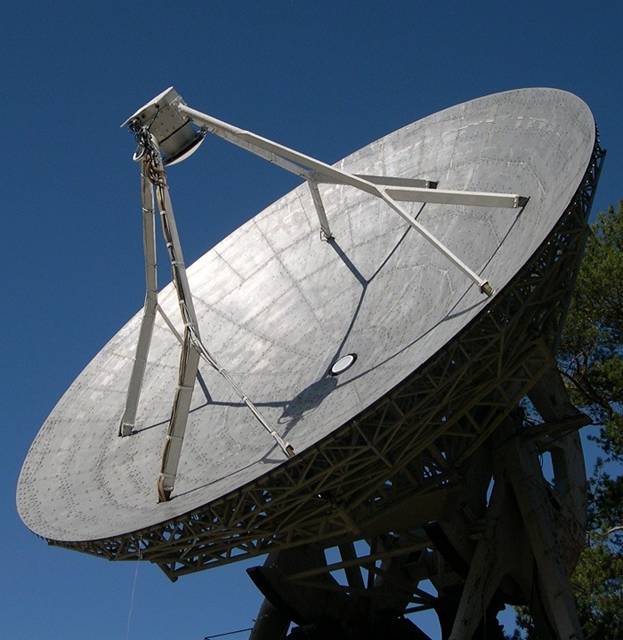
Common applications
In colloquial speech, the concepts of a satellite and a parabolic antenna are identified, but only specialists know what it is and why such a device is needed, in a narrow professional aspect. There are various equipment designed to receive a signal from one of the many satellites orbiting the Earth. A parabolic antenna is a type of receiving device that has its own distinct differentiations.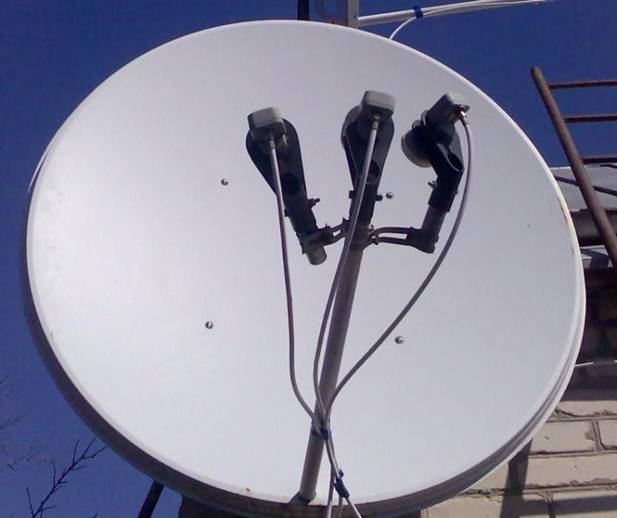 Parabolic antenna is often associated with satellite [/ caption] Their presence is due to the need to receive television, radio signals or provide access to the Internet. The functionality can be narrowly focused or universal, to provide communications, space communication centers and networks, weakly directional ones are used in satellite navigation and similar phones.
Parabolic antenna is often associated with satellite [/ caption] Their presence is due to the need to receive television, radio signals or provide access to the Internet. The functionality can be narrowly focused or universal, to provide communications, space communication centers and networks, weakly directional ones are used in satellite navigation and similar phones. Parabolic antenna radiation pattern [/ caption]
Parabolic antenna radiation pattern [/ caption]
History of origin and development
G. Hertz used parabolic reflectors in his experimental activities. At the end of the 19th century, he invented an antenna with an aperture of more than a meter, operating at strictly defined frequencies. With a receiving and transmitting device at his disposal, he proved the existence of the electromagnetic waves predicted by Maxwell. Then the era of improvement and practical application began:
- In the first third of the twentieth century, G. Marconi, an inventor from Italy, was able to transmit a signal to a boat sailing at sea, at a considerable distance from the coast.
- A year later, a similar device was used to establish radio relay communications across a wide strait.
- G. Grotte built the first large PA and with its help was engaged in the study of stars. The reflector diameter did not even exceed ten meters.
- During the Second World War, purposeful work began on improving radars, which gave a powerful impetus to the development and improvement of devices, led to the emergence of a new type of antennas equipped with sector diagrams.
Note! In the post-war years, the USSR and the USA developed new forms of the device, in which the diameter of the mirror began to reach 60-100 meters. Now they are used in data transmission systems, permanent improvement and new developments of scientists have made it possible to minimize the need for large structures up to 1.5 meters or even tens of centimeters.
Types and design features
Reflector antennas are not the only, but the most common type of directional antennas. They are used in the most variable ranges and at various types of stations. The size, design and material of manufacture depend on the function and purposefulness. Mirrors are made of steel or aluminum alloys with electrical conductivity.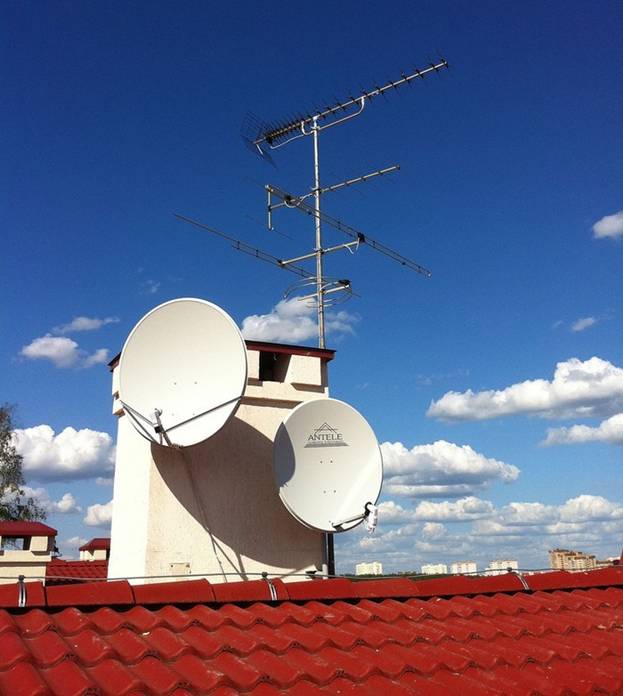 In recent years, they began to be made from composites or even plastics, but at the same time there must be a reflective surface – it is also variable. Metal mesh or foil, electrically conductive paint can be used. There are other types as well:
In recent years, they began to be made from composites or even plastics, but at the same time there must be a reflective surface – it is also variable. Metal mesh or foil, electrically conductive paint can be used. There are other types as well:
- axisymmetric , with one or two mirrors, symmetric or with a counter-reflector, ring focus;
- offset , which is cut from a parabolic mirror, with an offset radiation pattern;
- HEADLIGHTS, or phased antenna arrays , from several emitters, with variable types of antennas (strip, thrust or slot);
- weakly directional , with a wide radiation pattern, despite some shortcomings, working with visually detectable satellites and does not require additional guidance;
- traveling wave – amplified (when compared with non-directional, but operating in the meter or decimeter range).
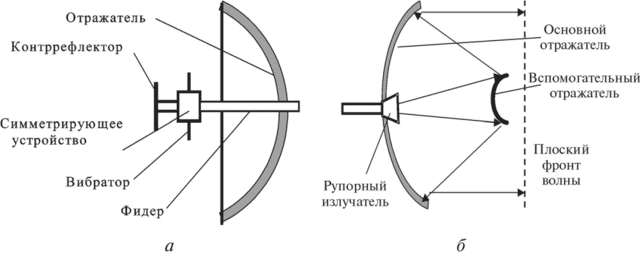
Attention! The choice of a satellite dish for receiving TV signals should be dictated by several considerations – material (resistance to external influences, when placed in the air), the type of reflector and its quality, the number of converters and methods of their attachment. An important condition is quality, strength and corrosion resistance.
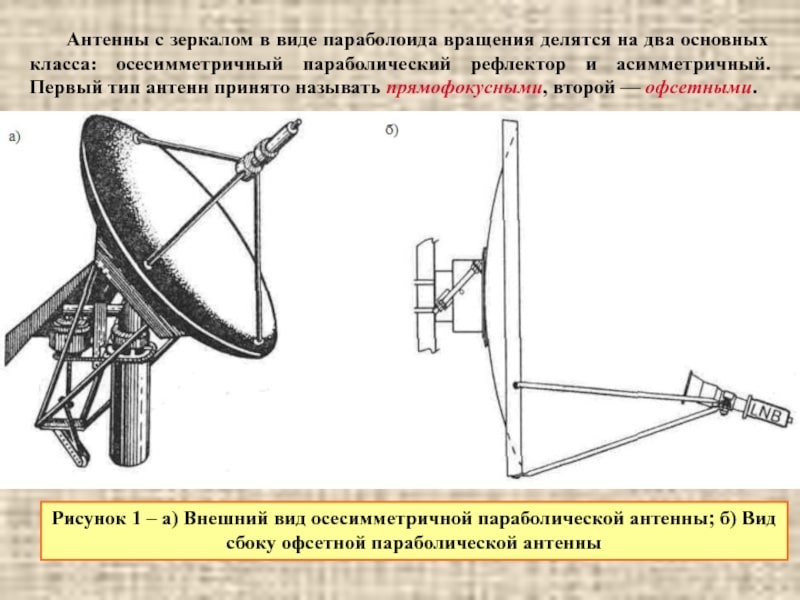 Types of parabola type antennas [/ caption]
Types of parabola type antennas [/ caption]
Application and assembly
Any radio engineering device used as a transmitter or receiver is an organic part of the system and one of its basic elements. Instructions on how to do it yourself depend on the selected type, size and purpose. The reflector antenna has significant advantages – it works in different ranges. Such devices have a relatively high efficiency and a fairly low noise temperature. Parabolic is their most typical representative. The simplicity of the device does not mean that when making with your own hands, you do not need to take into account the specific requirements of the individual order. The most general information is in the video below: https://youtu.be/6Cku8eGomec The diameter of the plate in the range on sale is from 55 cm to 80 cm, and this is not the cheapest of the pleasures.DIYers offer many detailed instructions on how to make antennas, as well as how to install and set up: from site selection, calculation, to final tuning. At the same time, it is indicated that any kit should consist of many parts. Some of them can be made in a mini-workshop, bought separately in a special store, or purchased in a set (not everything can be satisfied there in terms of quality or properties, but it comes out cheaper, and everything is from one manufacturer). bought in a special store separately or purchased in a set (not everything can suit them in terms of quality or properties, but it comes out cheaper, and everything is from one manufacturer). bought in a special store separately or purchased in a set (not everything can suit them in terms of quality or properties, but it comes out cheaper, and everything is from one manufacturer). How the power depends on the antenna diameter [/ caption]
How the power depends on the antenna diameter [/ caption]
Important! The set includes a mirror dish, a receiver (its type depends on the goals pursued), but the main purpose is to receive and convert a signal from a satellite to a TV screen, in the form of a picture, three converters that provide simultaneous reception from three satellites, fasteners (often appears in descriptions as multifeeds),
cable , coupling connectors and the actual antenna mount.
When choosing a place to install such an antenna, preference is given to the southern or southwestern side. This is important because all satellites are located in geostationary orbit exactly from the southeast to the southwest. If there are no windows facing south, then the only option remains – installation on the roof.
It is forbidden to install the antenna under the roof ebb.
The antenna is fixed at an angle of about 25 °, that is, it looks a little down, as in the photo: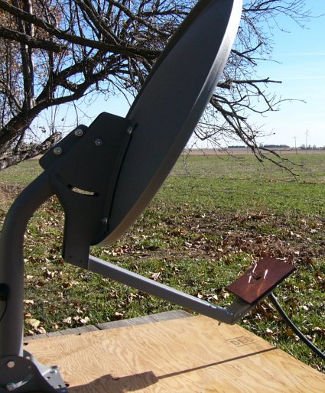 When setting up the antenna, a correctly calculated azimuth will be of great help. To determine the azimuth, use a magnetic compass. It is aligned parallel to the ground to establish a northern direction. In this case, it is necessary to select an object for reference. The degree is counted in clockwise directions on the compass (from zero, to the line that connects to the selected object). This is how the magnetic bearing is calculated. To the result obtained, add or subtract the magnetic declination of a particular region. To tune the antenna, use a special version of the SATTV program.
When setting up the antenna, a correctly calculated azimuth will be of great help. To determine the azimuth, use a magnetic compass. It is aligned parallel to the ground to establish a northern direction. In this case, it is necessary to select an object for reference. The degree is counted in clockwise directions on the compass (from zero, to the line that connects to the selected object). This is how the magnetic bearing is calculated. To the result obtained, add or subtract the magnetic declination of a particular region. To tune the antenna, use a special version of the SATTV program. After installing it along the path C: \ Program Files \ SATTV 2.0 \ Zone, its bases will contain the paths to the satellite coverage areas. It is better to install the ready-made kit in accordance with the attached instructions. Usually the plate is assembled completely, and only after that the installation is started. It is recommended to use a rigidly fixed vertical metal bracket, which will not depend on weather conditions and not lose image quality. Fine tuning of the heads and their correct connection to the switch is necessary to match the tuner settings and connections in the antenna. Assembly, installation and configuration of a parabolic antenna for receiving a satellite signal: https://youtu.be/XNk-KTjEgEY
After installing it along the path C: \ Program Files \ SATTV 2.0 \ Zone, its bases will contain the paths to the satellite coverage areas. It is better to install the ready-made kit in accordance with the attached instructions. Usually the plate is assembled completely, and only after that the installation is started. It is recommended to use a rigidly fixed vertical metal bracket, which will not depend on weather conditions and not lose image quality. Fine tuning of the heads and their correct connection to the switch is necessary to match the tuner settings and connections in the antenna. Assembly, installation and configuration of a parabolic antenna for receiving a satellite signal: https://youtu.be/XNk-KTjEgEY
Reflector antenna characteristics
The use of parabolic antennas has made them an indispensable component of not only urban but also rural landscape. But this is not only due to the spread of satellite television. They are used in radar systems, for wireless communication, radio relay, satellite and inter-space, and are used in the activities of radio telescopes. The main characteristics of a useful device are considered to be the width of the radiation pattern, its shape, efficiency and gain, effective area, and so on. Let’s consider the main ones:
- irradiator (1 or more), forms the DN;
- the beam width is determined by the main function – reception or transmission, there are special formulas for this;
- Efficiency may depend on design features (non-continuous mirrors, meshes used to lighten weight or reduce weather resistance).
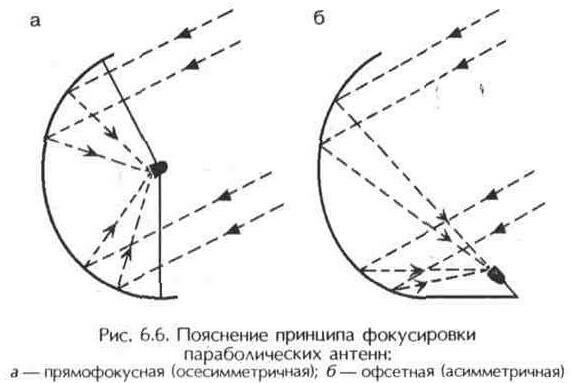 Focus parabolic antenna [/ caption] A homemade satellite dish can be made in different ways – gluing to a concrete base, from an old umbrella and aluminum foil (you need an amplifier with a power supply), from a thin metal sheet, from plexiglass and even from wire. In the video, the master reveals the secrets of making a satellite parabolic dish with his own hands: https://youtu.be/HBkfdb6rK2E The apparent simplicity in the descriptions of folk craftsmen, in fact, requires certain work skills, tools and free time. Homemade devices are cheaper, but the quality of the picture on the TV screen does not always reach the desired level. When purchasing a ready-made kit, you need to clearly determine not only the location, but also the parameters. In some regions of Russia, the minimum diameter is sufficient to receive individual channels,and sometimes 90 cm is not enough.
Focus parabolic antenna [/ caption] A homemade satellite dish can be made in different ways – gluing to a concrete base, from an old umbrella and aluminum foil (you need an amplifier with a power supply), from a thin metal sheet, from plexiglass and even from wire. In the video, the master reveals the secrets of making a satellite parabolic dish with his own hands: https://youtu.be/HBkfdb6rK2E The apparent simplicity in the descriptions of folk craftsmen, in fact, requires certain work skills, tools and free time. Homemade devices are cheaper, but the quality of the picture on the TV screen does not always reach the desired level. When purchasing a ready-made kit, you need to clearly determine not only the location, but also the parameters. In some regions of Russia, the minimum diameter is sufficient to receive individual channels,and sometimes 90 cm is not enough.
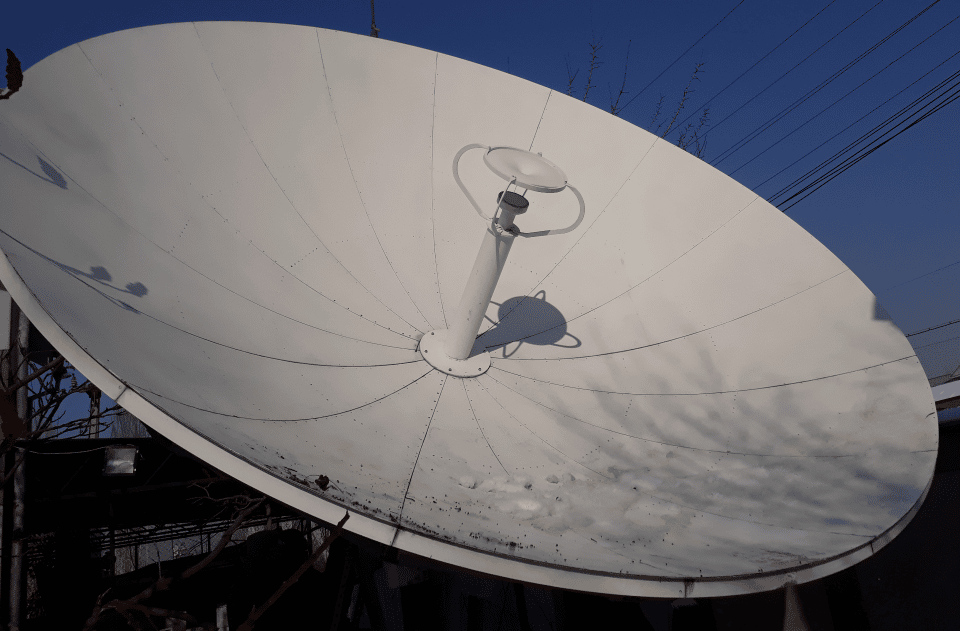



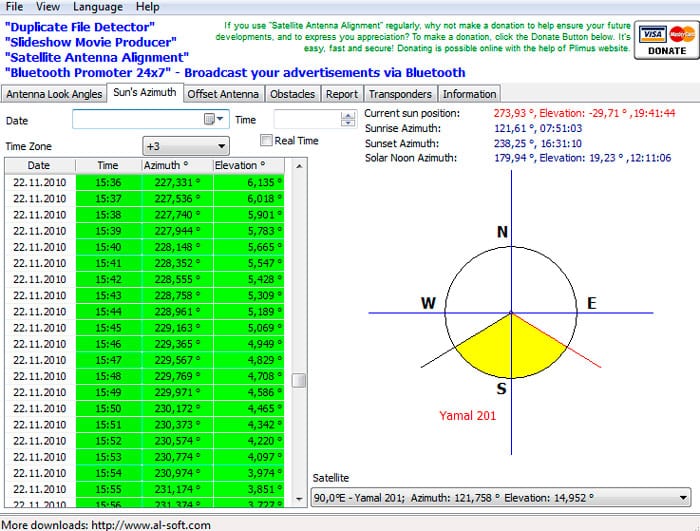
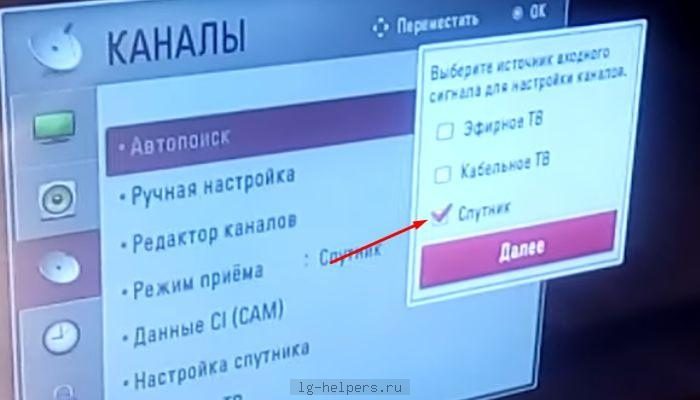


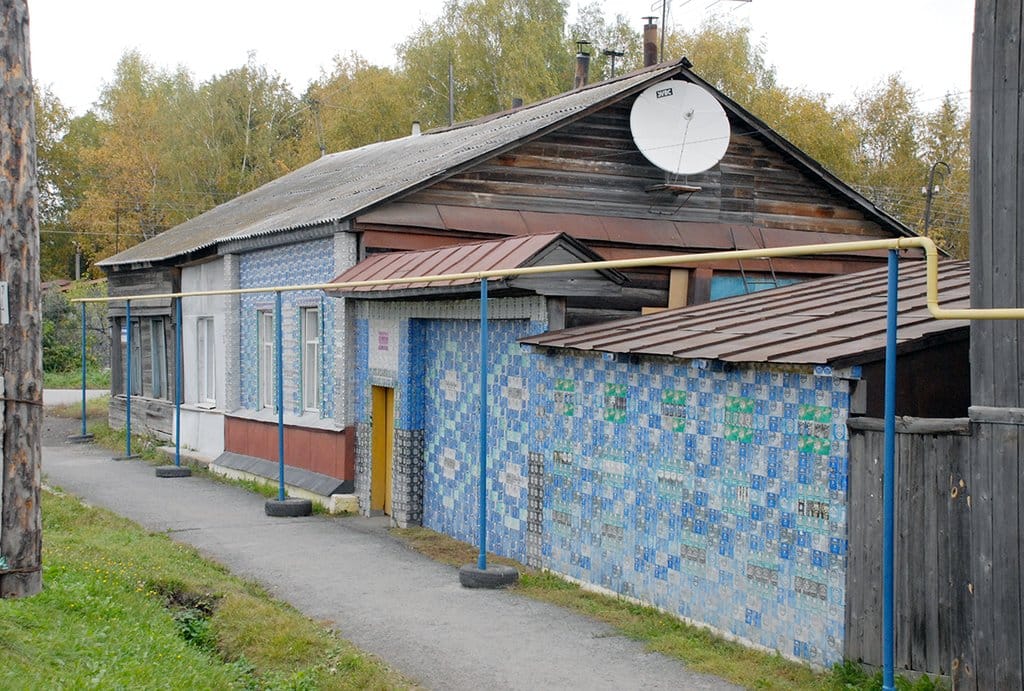
Je vous demande application alownapp
Merci d’avance
A bientôt